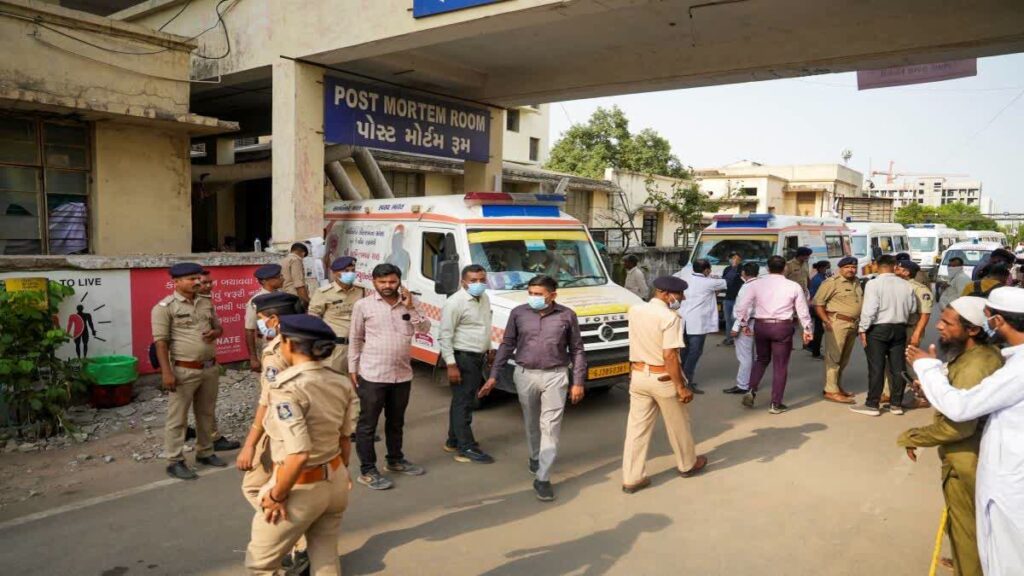
A Tragedy That Demands Science and Sensitivity
Plane Crash
The Air India plane crash in Ahmedabad sent shockwaves across the nation, claiming dozens of lives and leaving many more injured or unaccounted for. In such devastating aviation disasters, identifying victims becomes one of the most urgent and emotionally charged challenges for authorities. With bodies often mutilated or burned beyond recognition, traditional identification methods fail, making DNA analysis the most reliable tool for confirming identities.
This article explores how DNA identification works, especially in the aftermath of large-scale aviation disasters like the one in Ahmedabad.
🔍 Why DNA Is Crucial After a Plane Crash
Plane crashes involve high-speed impact, fire, and fragmentation, which often render visual identification or fingerprinting impossible. In such cases, authorities turn to DNA profiling, a process that helps:
- Match body remains to known individuals
- Provide closure to grieving families
- Avoid identity mix-ups or misreporting
- Enable proper funerals and legal processes
🧬 Step-by-Step: How DNA Identification Works
1. Collection of DNA Samples from Victims
Forensic teams collect biological samples such as:
- Bones
- Teeth
- Tissue
- Hair follicles
- Blood traces (if available)
These are preserved carefully to prevent degradation, even in harsh environments.
2. Reference Sample Collection from Relatives
This is a critical phase. Family members provide:
- Buccal swabs (inner cheek cells)
- Personal belongings of the missing person (like hairbrushes, razors, or used toothbrushes)
This reference DNA is compared to victim samples to find a match.
3. DNA Extraction and Amplification
In forensic labs, DNA is extracted from collected tissues using specialized reagents. Since crash conditions may degrade the DNA, Polymerase Chain Reaction (PCR) is used to amplify small fragments to readable levels.
4. STR Profiling (Short Tandem Repeat)
Scientists examine specific regions in the DNA known as STRs, which vary from person to person. This creates a genetic profile, like a fingerprint, unique to each individual.
5. Matching and Confirmation
The victim’s STR profile is matched with reference profiles. A match probability is calculated, often reaching 99.99% confidence levels, depending on sample quality and number of reference points.
🏥 Role of Government Agencies and Disaster Teams
In India, disaster victim identification (DVI) efforts are coordinated by:
- National Disaster Response Force (NDRF)
- Forensic Science Laboratories (FSL)
- State Police Forensics Units
- In some cases, CBI and Central Forensic teams assist in mass casualty events
After the Ahmedabad crash, Forensic Science Laboratory (FSL), Gandhinagar, and local DVI experts were deployed on-site to secure remains, collect evidence, and start the identification process.
🧠 Challenges in DNA Identification
Despite being a scientific marvel, DNA identification has hurdles:
- Severely degraded samples due to heat or water exposure
- Contaminated remains when multiple victims are entangled
- Incomplete reference samples when no known relatives are available
- Time delay — DNA testing can take days or even weeks
However, advances in forensic genetics, like Next-Generation Sequencing (NGS) and Rapid DNA technology, are helping cut down the time and increase accuracy.
🙏 For the Families: More Than Just Science
DNA identification isn’t just a scientific procedure—it is an act of dignity, closure, and justice. For families of crash victims, not knowing what happened is worse than grief. DNA confirmation allows them to:
- Receive remains for last rites
- Legally claim death certificates
- Settle insurance and inheritance matters
- Begin emotional healing
Psychologists often note that identification brings an end to uncertainty, which is vital for beginning the grieving process.
🧭 Conclusion: Turning Science into Solace
The aftermath of the Ahmedabad Air India crash is a grim reminder of the fragility of life—and the importance of advanced forensic methods like DNA profiling. While no technology can reverse tragedy, DNA identification ensures every victim is known, named, and remembered.
It transforms anonymous remains into real people again. It offers families the truth they deserve. And it upholds the promise that in death, too, there will be dignity.
Thanks for Reading